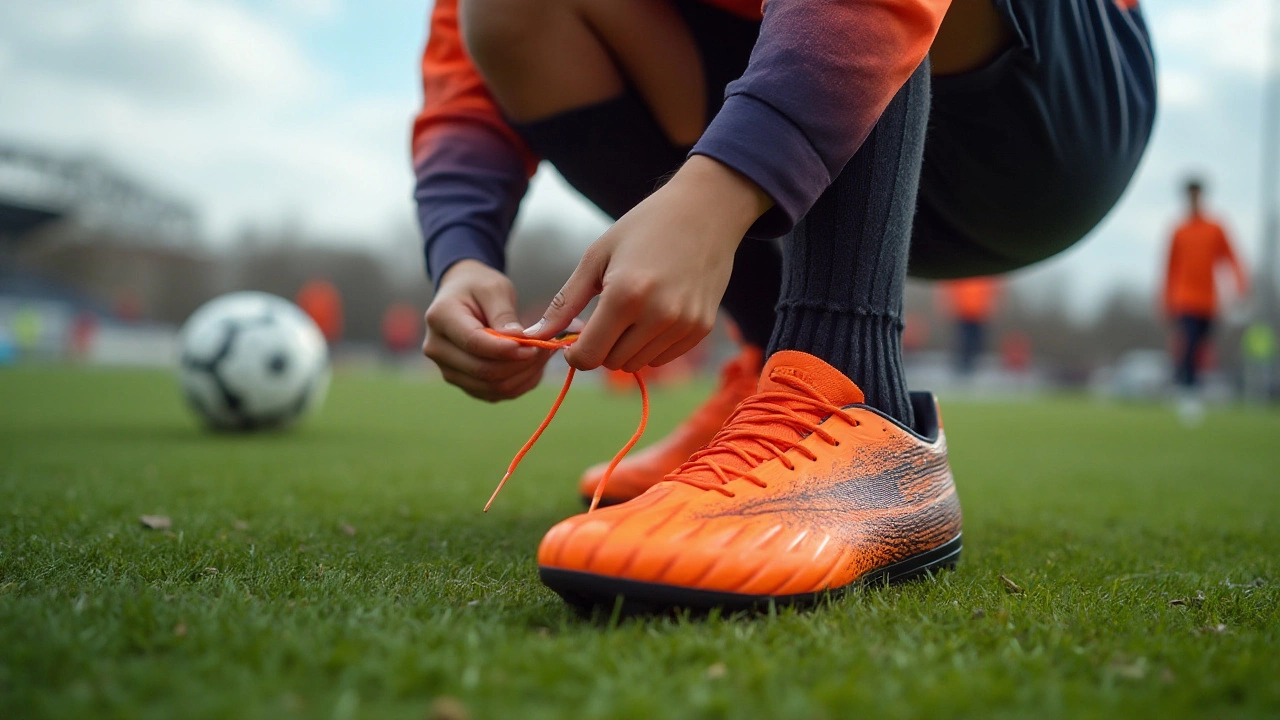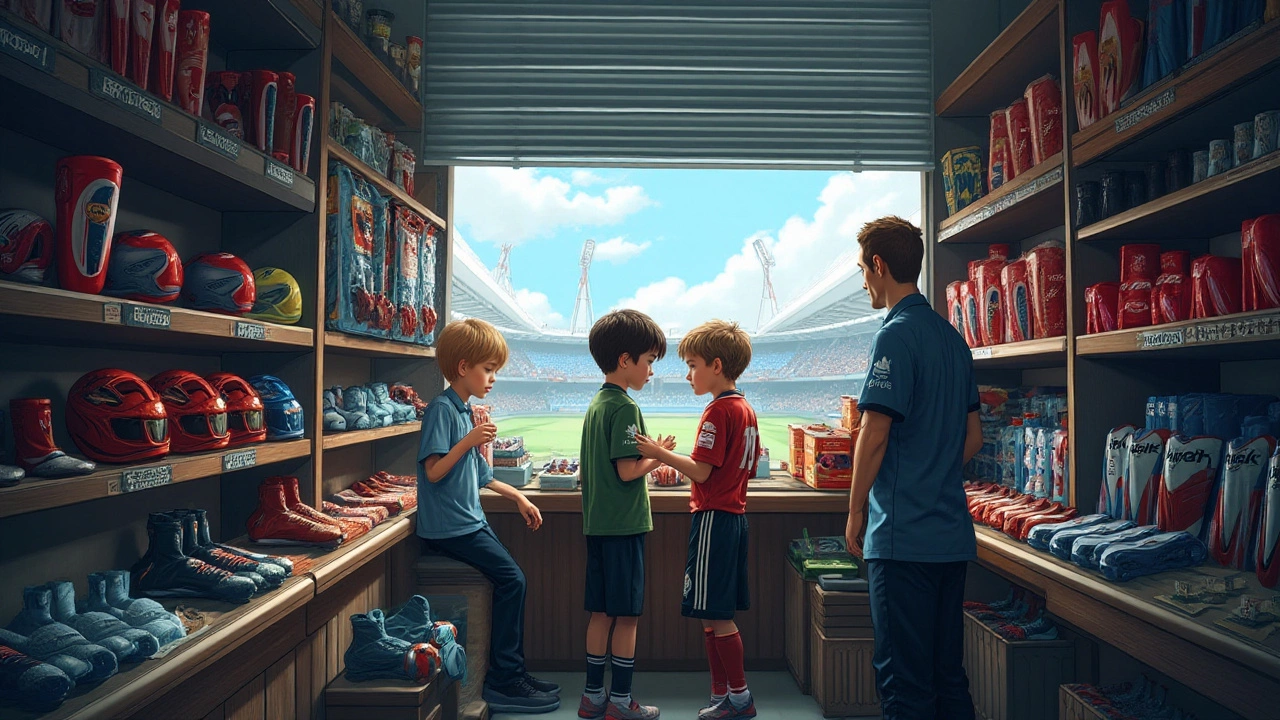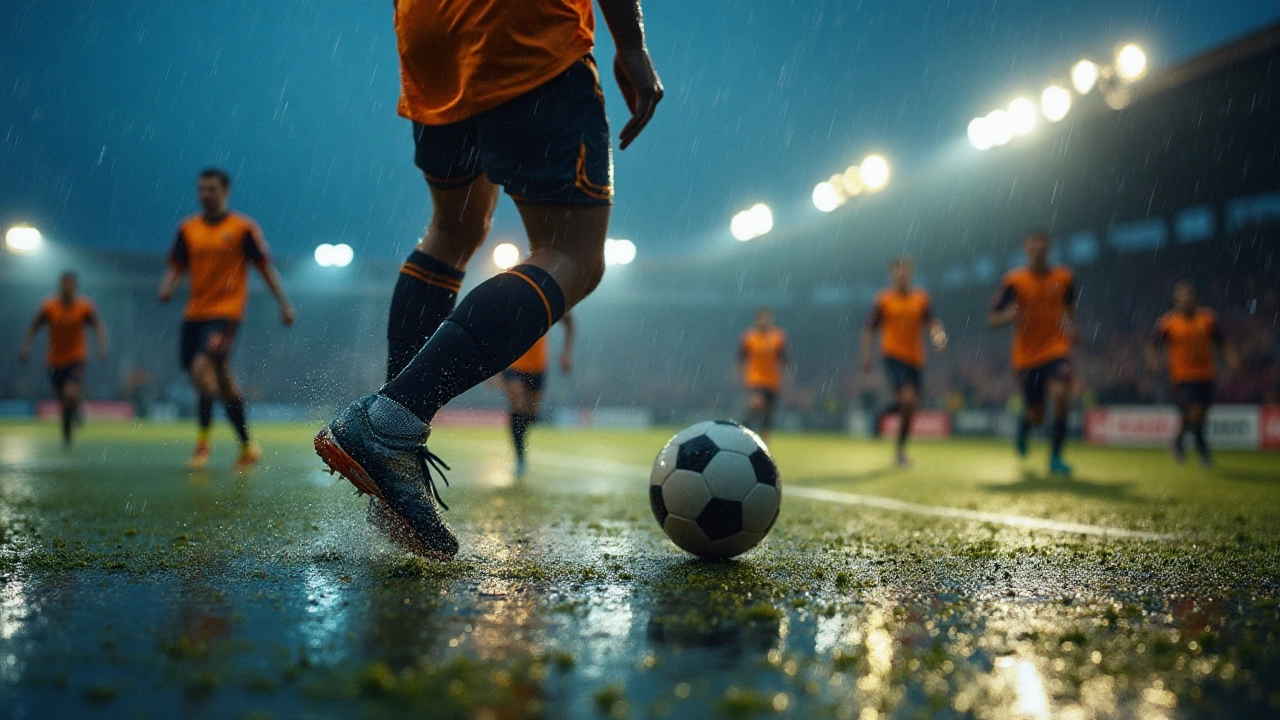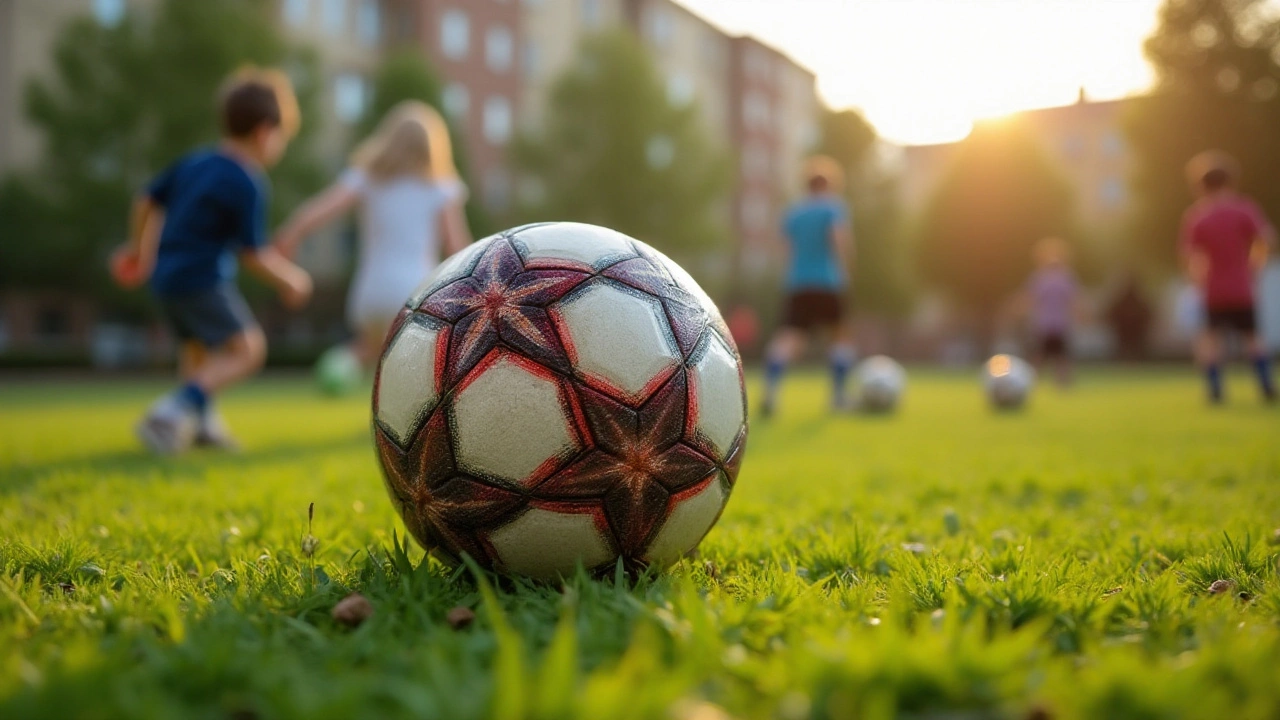
Football, a game cherished by millions around the world, is as much about the equipment as it is about the skills on display. Understanding the gear involved can make a significant difference in both performance and safety on the field.
From the sturdy helmets that guard against injuries to the cleats that offer grip and stability, each piece of equipment is designed with purpose and precision. Delving into the essentials in football gear can help both beginners and seasoned players make informed choices. Whether you're gearing up for a casual match with friends or a competitive league game, having the right equipment is vital.
- Introduction to Football Gear
- Protective Equipment
- Footwear and Apparel
- Football Balls and Accessories
Introduction to Football Gear
Embarking on the journey of understanding football equipment opens up a realm of fascinating insights into the sport itself. Football, often called soccer in some parts of the world, demands not just skill and strategy, but also the right gear to ensure players can perform safely and efficiently. Each piece of sports gear is crafted with meticulous attention to detail, designed to withstand the intense physicality and demands of the game. Whether you're a novice stepping onto the grass for the first time or a veteran who's seen countless games, the proper equipment can be a game-changer.
The history of football gear dates back to the origins of the sport itself. Back in the day, players relied on rudimentary homemade gear, which offered little protection. As time progressed, innovations led to more sophisticated designs using advanced materials. Today, each item, from the lightweight jerseys that keep players cool under pressure, to the cushioned shin guards that fend off kicks, reflects a rich legacy of craftsmanship. An average football match can place immense strain on players' bodies, making equipment choice crucial not just for performance, but longevity in the sport. Each layer, each stitch, is calculated, contributing to the ultimate goal of harmonizing protection, comfort, and performance. It's a dance of engineering and sports science, with the player at the heart of it all.
Understanding what makes up the essential football gear involves delving into the equipment's roles and requirements. The basic ensemble includes items such as cleats, a jersey, shorts, socks, shin guards, and sometimes gloves, especially for goalkeepers. Helmets and shoulder pads, commonplace in American football, are not typically used in this version, barring any specific instances where extra safety is needed. The myriad selection of gear is tailored to enhance individual play style and match conditions, such as weather and terrain. Notably, football boots, or cleats, come in a staggering variety of stud patterns and materials, each suited for different field conditions, be it firm ground, soft ground, or artificial turf. The choice of such gear can decisively influence how a player executes turns, controls the ball, or accelerates to intercept an opponent.
"The right football boots can change a game. They are an extension of a player's feet, merging grip, agility, and power," said football legend Pele, underscoring the importance of well-selected equipment.
The evolution of football equipment has also brought about eco-friendly options, with brands now offering gear made from recycled materials, addressing concerns for sustainability without sacrificing performance. As modern players become more environmentally conscious, this development is seen as a welcome advancement. Studies have shown that biodegradable materials, particularly in apparel, have little impact on the player's comfort and durability in various playing conditions. As a nod to tradition while embracing cutting-edge technology, football equipment continues to evolve, contributing positively to both the game and the planet.

Protective Equipment
When it comes to football, protective gear is not just a suggestion—it's a necessity. From helmets to pads, each piece of equipment ensures that players can perform at their best while reducing the risk of serious injuries. The most critical in the lineup is the helmet, designed to protect against concussions and other severe head injuries. Today's helmets go beyond just a hard shell. They incorporate layers of foam padding and advanced shock-absorption technology. Some brands have developed helmets with bespoke fits that cater to the player's head shape, allowing for maximum comfort and protection.
Next in line are the shoulder pads, which shield against collisions that are common during tackles and blocks. Modern shoulder pads are engineered to distribute the impact force over a larger area, lessening the risk of injury to the shoulders and collarbones. Though they might seem bulky to the untrained eye, today's versions are incredibly lightweight, allowing athletes to maintain agility without compromising protection. The padding is strategically placed around key impact areas, balancing freedom of movement with coverage. Digging deeper into smart design, some shoulder pads are equipped with detachable parts, allowing players to customize fit and protection levels based on their on-field needs.
Knee and thigh pads are essential in football for protecting lower extremities from bruises and fractures during the game. While appearing understated, knee pads nowadays integrate lightweight foam and gel inserts, offering superior protection without hindering speed. A truly interesting development in thigh pads is the advent of cup-like armor crafted from modern composites that absorb more impact than earlier plastic inserts. This advancement results in better protection for limbs while also optimizing comfort and flexibility. Speaking of statistics, according to recent studies, these enhancements have led to a 30% reduction in lower body injuries over the past decade.
Protective gear doesn't end here. Mouthguards may seem minor compared to other types of equipment, but they hold a critical purpose. By cushioning teeth against impacts, these small devices prevent dental injuries and reduce the risk of concussions. Innovations in this area have introduced custom-fit mouthguards, which can be molded to each player's unique dental arrangement. There's also an increasing trend of incorporating technology into mouthguards that monitor impacts and alert medical staff in real-time. Pads and cups are not to be overlooked either, worn to protect the hips, coccyx, and ribs. Modern designs of rib protectors and girdles offer impact resistance without adding unnecessary bulk, showing how far gear innovation has come. Many athletes prefer this updated equipment due to its ingenious mix of lightness and formidable shielding.
"The art of war teaches us to rely not on the likelihood of the enemy's not coming, but on our own readiness to receive him; not on the chance of his not attacking, but rather on the fact that we have made our position unassailable," once said the great Sun Tzu. This saying echoes the mindset behind each piece of protective equipment, where readiness and safety are paramount.

Footwear and Apparel
Wearing the right football equipment can transform how you play, particularly when it comes to footwear and apparel. Football cleats are not just shoes; they are a critical part of your gear that interacts directly with the ground, aiding in traction, speed, and stability. Cleats come in various designs and materials, crafted to cater to different field conditions, such as firm ground, soft ground, or artificial turf. Typically, players must choose between leather and synthetic materials based on comfort, durability, and weather conditions. Leather cleats often mold to the foot, offering a more personalized fit, but they might not handle wet conditions well. Synthetic options, on the other hand, provide a durable and often lighter alternative, with better waterproof features.
When it comes to sports gear, jerseys and shorts are essential, designed for performance and comfort. Made from breathable, moisture-wicking fabrics, these pieces ensure that players remain dry and comfortable, even during rapidly changing weather conditions. Temperature regulation counts heavily in maintaining stamina during a match. Fabrics that breathe and wick away sweat play a critical role in performance during intense play. Compression wear is another common apparel choice, believed to support muscles and improve blood flow, although its effectiveness varies among athletes. Base layers can provide additional warmth or cooling, depending on the fabric—valuable aspects to consider when gearing up for different playing environments and seasons.
"Success isn’t owned. It’s leased, and rent is due every day." — J.J. Watt
The color and design of a team's apparel often represent more than just aesthetics. They symbolize team identity and spirit, crucial elements of the psychological game. Historically, clubs with iconic jerseys tend to foster a stronger fan base and connection with the community. Uniform rules also play a crucial role, from jersey numbers that help referees and fans keep track of players, to the socks and shin guards mandated for protection. Specific guidelines, set by governing bodies, ensure that all players follow consistent standards which promote safety and fair play on the field.
Choosing the right football gear can make a significant impact, catalyzing performance while minimizing the risk of injury. Players often spend considerable time discovering the perfect fit, adding accessories like insoles, which can help alleviate foot strain or correct biomechanical issues. Accessories such as headbands or gloves can serve additional purposes, such as providing warmth in cold weather, securing long hair, or offering better grip in wet conditions, making them a practical addition to an athlete's kit.

Football Balls and Accessories
When it comes to football equipment, the ball itself holds a place of pivotal significance. Often dubbed the heart of the game, a football's construction and design are crafted to favor optimal performance. Traditionally made of leather, many modern balls now use high-grade synthetic materials to improve durability and water resistance without compromising the feel. This is backed by FIFA's standardization which dictates specifications such as circumference, weight, and pressure. This regulation ensures that any football used in official games meets a certain level of consistency and quality, crucial for fair play.
Varieties of footballs abound, engineered specifically for diverse environments and player skill levels. From professional-grade match balls to durable training options, choosing the right ball can potentially elevate one's game. Match balls are precision-crafted using multiple layers of material for enhanced control and trajectory, whereas training balls are often heavier and sturdier, built to withstand the repetitious rigors of everyday practice.
"The feel of a good ball at your foot can change your whole game. It's an extension of you," commented renowned football coach, Alex Ferguson, spotlighting the bond between player and ball.
In addition to the balls, an array of accessories complement the game, enhancing both play and safety. Pumps are essential for maintaining the ball's pressure, especially since a properly inflated ball ensures maximum bounce and precision. Ball pumps come in various styles, from simple hand pumps to sophisticated electric versions, allowing players to keep their equipment in pristine condition. Moreover, ball bags offer a convenient solution for transport, typically holding several balls securely at once. These bags are often designed from durable materials such as nylon, with mesh sides that allow for air circulation, preventing moisture build-up that could damage the balls.
Another key accessory in the world of football includes marker cones used for training exercises. Available in bright, eye-catching colors, these cones are usually crafted from sturdy yet lightweight plastic, facilitating easy setup and transport. While often overlooked, cones play an essential role in developing agility and precision on the field. Players utilize these tools to simulate game scenarios, hone dribbling skills, and even improve tactical awareness. Given their impact, many coaches invest in sets with varying sizes and shapes to best suit the team’s training needs.
For younger players entering the world of football, the market offers smaller-sized footballs. Often categorized by size, these junior footballs serve to optimize developmental learning, allowing children to handle and strike the ball with greater ease. It is crucial for beginners to start with the appropriate size to build confidence and skill. Additionally, soccer-themed games and toys can be excellent aids in introducing the sport to children, often blending learning with play. A simple backyard kickabout or the more structured environment in a youth league setting can create a lifelong love for the game, sparked by the right football gear.
According to recent statistics, global sports retailers have seen an uptick in the sale of tailored football equipment, suggesting a growing consumer awareness and interest in specialized gear.
| Equipment | Growth Rate (%) |
|---|---|
| Match Balls | 6.2 |
| Training Balls | 5.8 |
| Pumps & Accessories | 4.9 |
